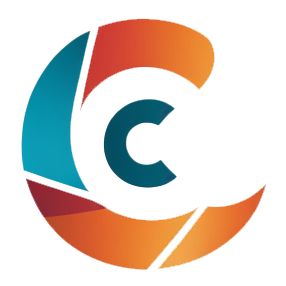Introduction
Transcranial direct current stimulation (tDCS) is a non-invasive neuromodulation technique that delivers low-intensity direct current (typically 0.5 to 2 mA) to the cerebral cortex via surface electrodes placed on the scalp. It modulates cortical excitability by altering resting membrane potentials without directly inducing neuronal action potentials.
Depending on polarity:
- Anodal stimulation causes depolarization, increasing neuronal excitability.
- Cathodal stimulation induces hyperpolarization, decreasing excitability.
These effects are subthreshold, but repeated stimulation sessions may lead to long-term changes in synaptic plasticity (i.e., long-term potentiation or depression), with implications for both clinical and cognitive applications.
Mechanism of Action
tDCS alters cortical excitability and neuroplasticity by modulating:
- Glutamatergic and GABAergic transmission
- NMDA receptor activity
- Resting-state connectivity
- Dopaminergic and serotonergic neurotransmission (depending on targeted region)
These neuromodulatory effects are dose-dependent and influenced by:
- Electrode size and montage
- Current density
- Stimulation duration
- Individual anatomical and functional variability
Clinical Indications and Evidence
Established or Emerging Clinical Applications (Clinical Setting)
While tDCS remains investigational, evidence suggests potential clinical benefit in several neuropsychiatric and neurological disorders:
| Condition | Evidence Summary (as of 2025) |
|---|---|
| Major depressive disorder | Moderate-quality evidence of efficacy as adjunctive therapy (especially anodal prefrontal tDCS); recommended in recent CANMAT guidelines (2023) |
| Fibromyalgia | Low-to-moderate evidence for pain reduction via motor cortex stimulation |
| Addiction and craving | Some benefit in reducing cue-induced craving (alcohol, nicotine, food) |
| Post-stroke motor recovery | Evidence for motor cortex stimulation improving hand function; best in subacute phase |
| Aphasia (post-stroke) | Early-phase studies suggest benefit with speech therapy pairing |
| Parkinson’s disease | Mixed evidence; some motor and cognitive improvement with dorsolateral prefrontal cortex (DLPFC) stimulation |
| Alzheimer’s disease | Limited and heterogeneous data; some improvement in memory and executive function |
| Schizophrenia | tDCS may reduce auditory hallucinations with temporoparietal cathodal stimulation |
🔎 Note: These findings stem mostly from small, heterogeneous trials. A 2024 meta-analysis (Lancet Psychiatry) called for larger, sham-controlled, multicenter RCTs to establish efficacy.
Safety Profile
Adverse Effects (Typically Mild and Transient):
- Tingling or itching at electrode site
- Mild headache
- Skin redness
- Fatigue or dizziness
- Phosphenes (flashes of light) with occipital stimulation
No evidence of seizure induction in healthy individuals, though patients with epilepsy should be excluded unless under specialist supervision.
✅ According to the 2022 international safety guidelines, repeated daily sessions of up to 4 mA for 60 minutes are considered safe in clinical settings.
Long-term safety data, particularly in pediatric and elderly populations, remains limited.
tDCS vs Other Neuromodulation Techniques
| Modality | Mechanism | Intensity | Invasiveness | Use case |
|---|---|---|---|---|
| tDCS | Subthreshold membrane modulation | 0.5–2 mA | Non-invasive | Depression, stroke rehab, cognition |
| rTMS | Induces neuronal firing via magnetic pulses | High | Non-invasive | FDA-approved for depression, OCD |
| ECT | Induces seizure under anesthesia | High | Semi-invasive | Severe, treatment-resistant depression |
tDCS is more portable, cost-effective, and well-tolerated, but less potent than TMS or ECT in terms of immediate neurophysiological impact.
Limitations and Controversies
- No clear dosing guidelines (e.g., session frequency, total duration)
- Individual variability in responsiveness
- Placebo effects not fully excluded in several studies
- No proven cognitive enhancement in healthy individuals, despite anecdotal claims
- Widespread unsupervised use via online consumer-grade devices (unregulated)
⚠️ The U.S. FDA has not approved tDCS for any medical indication, and devices marketed for cognitive enhancement or pain relief remain under regulatory scrutiny as of 2025.
Risks of Unsupervised Use
- Improper electrode placement can cause paradoxical effects
- Non-standard devices lack current regulation, increasing risk of skin burns or ineffective dosing
- Long-term effects of chronic self-administration are unknown
Therefore, tDCS should be limited to clinical or research settings under specialist supervision (neurology, psychiatry, or cognitive neuroscience).
Research Frontiers (2023–2025)
Recent directions in tDCS research include:
- Closed-loop tDCS guided by real-time EEG/fMRI
- Individualized electrode modeling using MRI-based current flow mapping
- Combining tDCS with behavioral therapy (e.g., speech therapy, CBT)
- Pediatric tDCS for ADHD, autism spectrum disorder (limited but growing field)
- Exploring home-based tDCS with remote monitoring in clinical trials
Conclusion
tDCS is a promising non-invasive brain stimulation modality with potential applications in depression, stroke rehabilitation, pain, and neurocognitive disorders. While its safety profile is favorable, efficacy across most conditions remains inconclusive due to methodological limitations in existing trials.
At present, tDCS should be regarded as an investigational therapy, best reserved for use in specialist centers, and should not be recommended for unsupervised consumer use.
References
- Lefaucheur JP, et al. “Evidence-based guidelines on the therapeutic use of tDCS.” Clin Neurophysiol. 2022;133:53–90.
- Brunoni AR, et al. “tDCS in major depressive disorder: meta-analysis update.” Lancet Psychiatry. 2023;10(2):89–101.
- Bikson M, et al. “Safety of transcranial direct current stimulation in humans.” Brain Stimul. 2023;16(1):2–19.
- Fregni F, et al. “Neuromodulation therapies in neurology and psychiatry: an updated review.” JAMA Neurology. 2024.
- UK NICE Guidelines. Transcranial stimulation therapies for depression. Draft Review, 2025.
